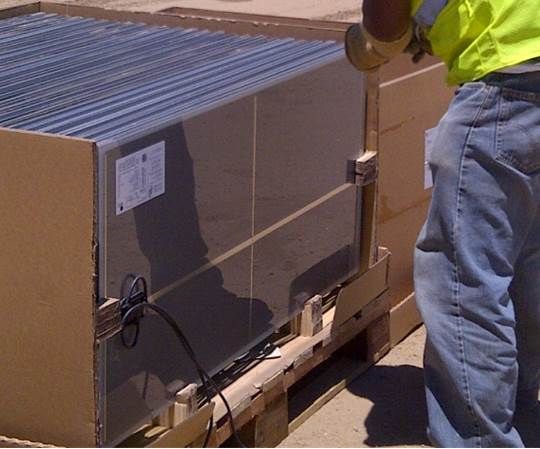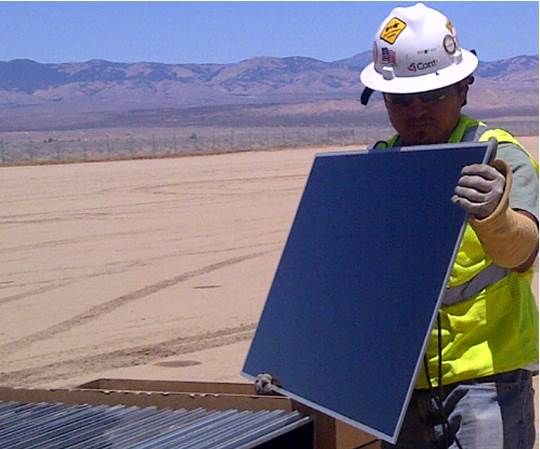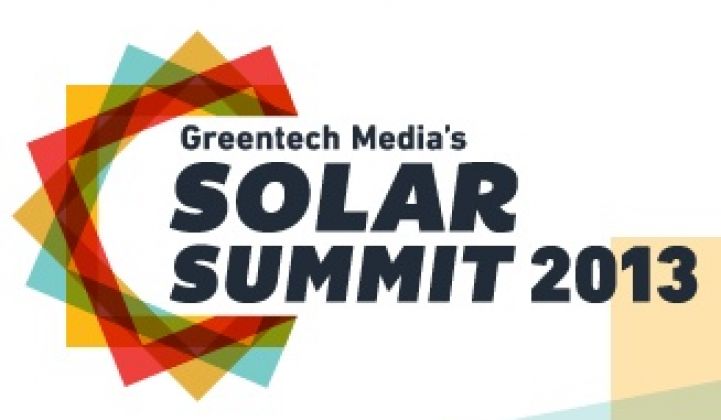Once and for all, are solar panels a commodity? That was the one of the big questions at this year's GTM Solar Summit.
A commodity can be traded more easily, in a consistent price range, and with predictable quality, according to speakers arguing whether solar modules are or are not, commodities in the annual GTM Solar Summit Debate.
This is important stuff -- the market’s take on a product’s reliability and bankability is affected by the commodity question.
That’s why GTM Research Senior Analyst MJ Shiao called the question “critical and divisive” in introducing 8minutenergy founder/CEO Martin Hermann to argue that solar panels have achieved commodity status, and DuPont (NYSE:DD) PV Solutions Global Marketing Director Conrad Burke to argue that they have not.

Hermann
Based on experience in the semiconductor conductor industry, the definition of a commodity can be the spread of the premium for the product. Copper, a commodity, trades in a fairly narrow price range. Fashion items do not. There is not a big spread in top-tier solar modules prices.
Burke
From my research, a commodity has a predictable and uniform quality and can be bought and sold like copper. It is ludicrous to compare solar modules to copper. Batting the term "commodity" around leads to a race to the bottom in price and quality. Modules will probably get to be a commodity, but we’re a long way from there.
Hermann
Modules are more like the memory component of a computer than the processor component. They are plug-and-play. Like the memory component industry, there will be boom and bust cycles until there are no more than 30 manufacturers. But that will lead to companies expanding their present 3 percent investment into research and development to 15 percent of their budgets. Important technology breakthroughs will follow.
Burke
The big difference is that the semiconductor and the telecom industries had unified standards, quality control standards and regulation of methods. In solar in the last twenty-four months, in the race for dollars per watt, there have been no standards with which to police quality. The new truSolar consortium now working for standards is important because solar cannot afford a black eye right now.
Hermann
Quality matters, but modules from Vendor A and Vendor B, if they are bankable modules, are interchangeable from project to project.
Burke
Bankability is now based on the manufacturer’s balance sheet. It must be broadened to include quality. This is going to be a $100 billion industry by 2015 and will still provide less than 1 percent of the world’s energy. Find somebody who was in the computer industry in the 1990s and they will tell you that we will get there. But maintaining quality through the drive for cost-cutting is critical.
Hermann
The balance sheet has a higher priority than it did three or four years ago. But in the end, it is about dollars per megawatt. The competition is fierce. The 2011 California RFP had applications for 91,000 megawatts submitted and solar projects for 350 megawatts were selected. The energy harvest, not the manufacturer’s balance sheet, is the key factor, and the key to energy harvest is module quality.

At the debate’s end, by a show of hands, 99 percent of the hundreds in the audience voted that solar modules are not yet commodities. Watch it below and decide for yourself:



